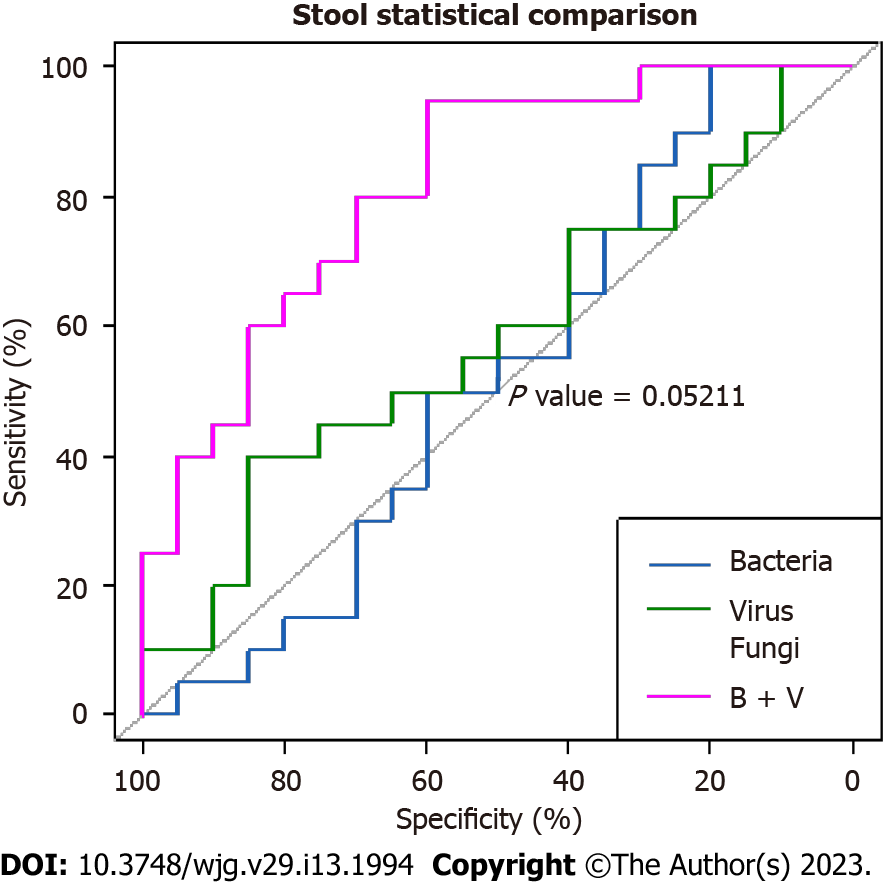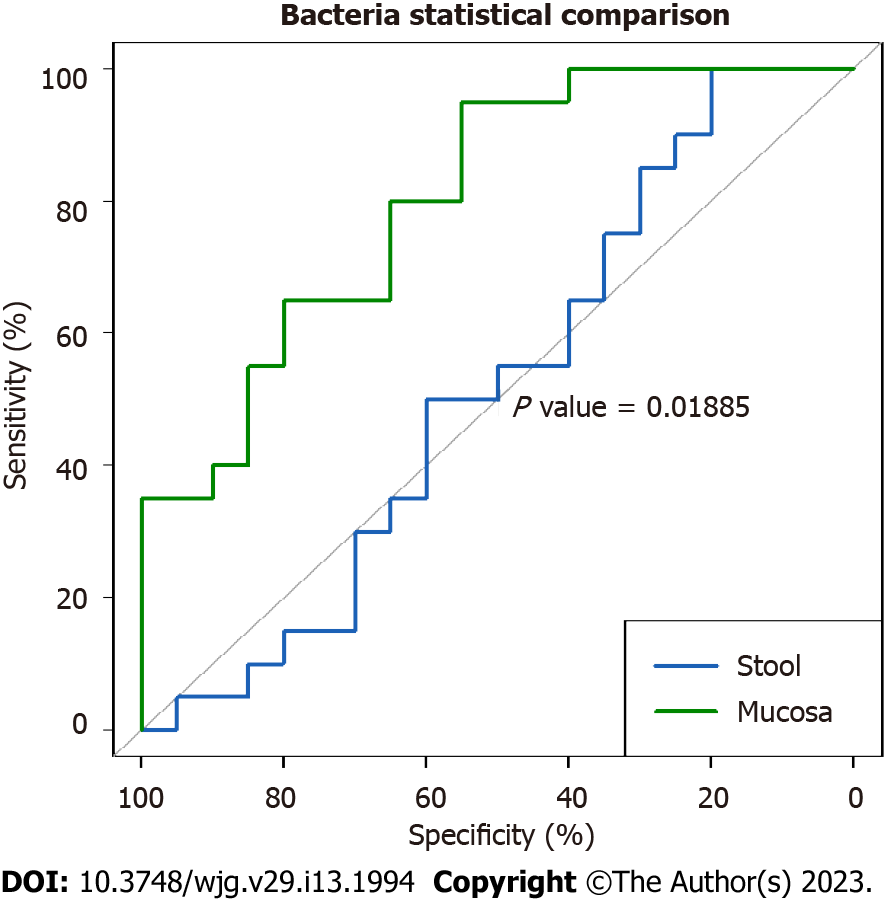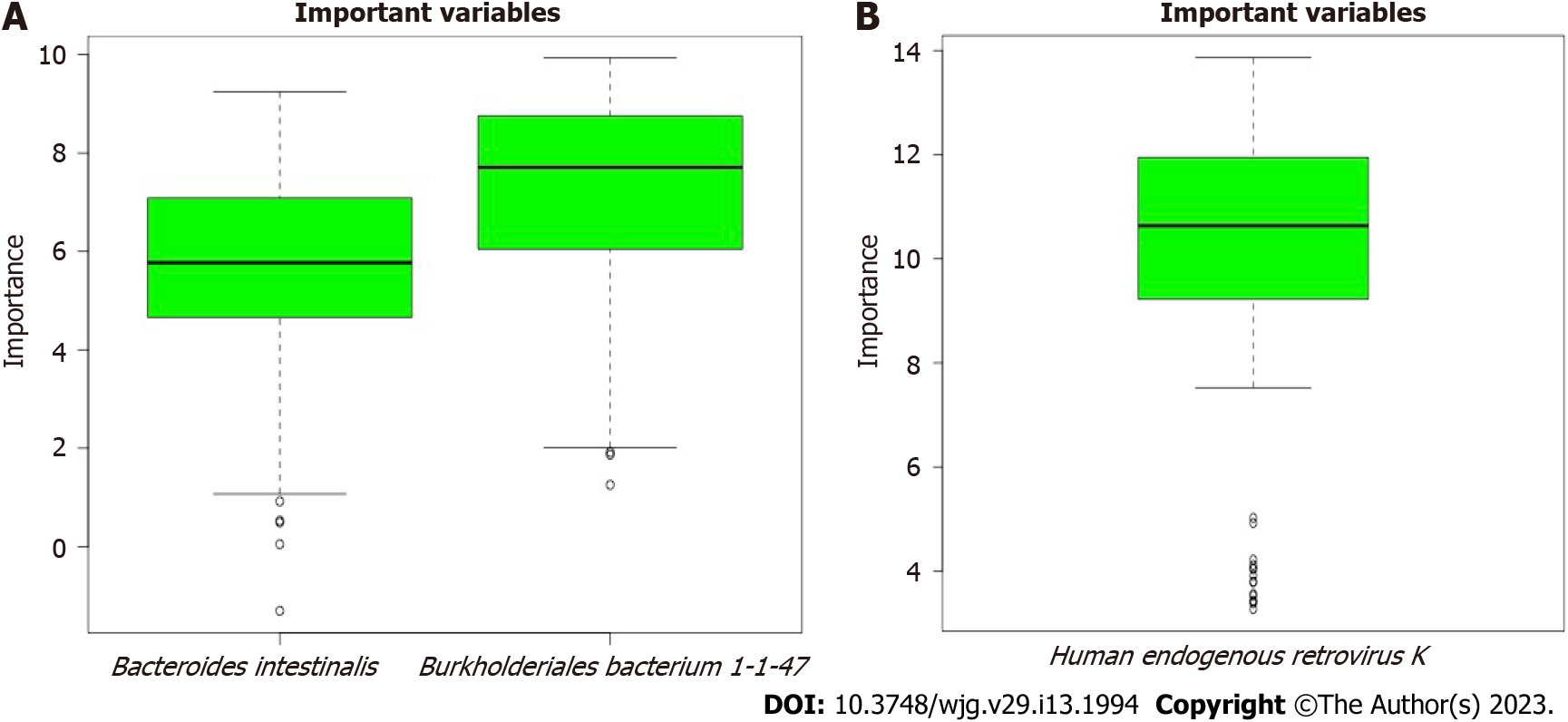Copyright
©The Author(s) 2023.
World J Gastroenterol. Apr 7, 2023; 29(13): 1994-2000
Published online Apr 7, 2023. doi: 10.3748/wjg.v29.i13.1994
Published online Apr 7, 2023. doi: 10.3748/wjg.v29.i13.1994
Figure 1 Comparative area under the curves of the fecal microbiota show that the combination of bacteria and viruses was the strongest predictor of celiac disease.
However, the difference between the area under the curve of bacteria alone and combined bacteria and viruses was borderline significant (P = 0.05211). B + V: Bacteria plus viruses.
Figure 2 Comparison between mucosal and fecal bacterial area under the curves shows that mucosal bacteria were significantly stronger predictors of celiac disease (P = 0.
01885).
Figure 3 The microbiota predicted important by Boruta random forest algorithm.
These included two bacteria in fecal samples. A: Bacteroides intestinalis and Burkholderiales bacterium 1-1-47; B: One virus mucosal samples, Human_endogenous _retrovirus_K.
- Citation: El Mouzan M, Assiri A, Al Sarkhy A. Gut microbiota predicts the diagnosis of celiac disease in Saudi children. World J Gastroenterol 2023; 29(13): 1994-2000
- URL: https://www.wjgnet.com/1007-9327/full/v29/i13/1994.htm
- DOI: https://dx.doi.org/10.3748/wjg.v29.i13.1994











